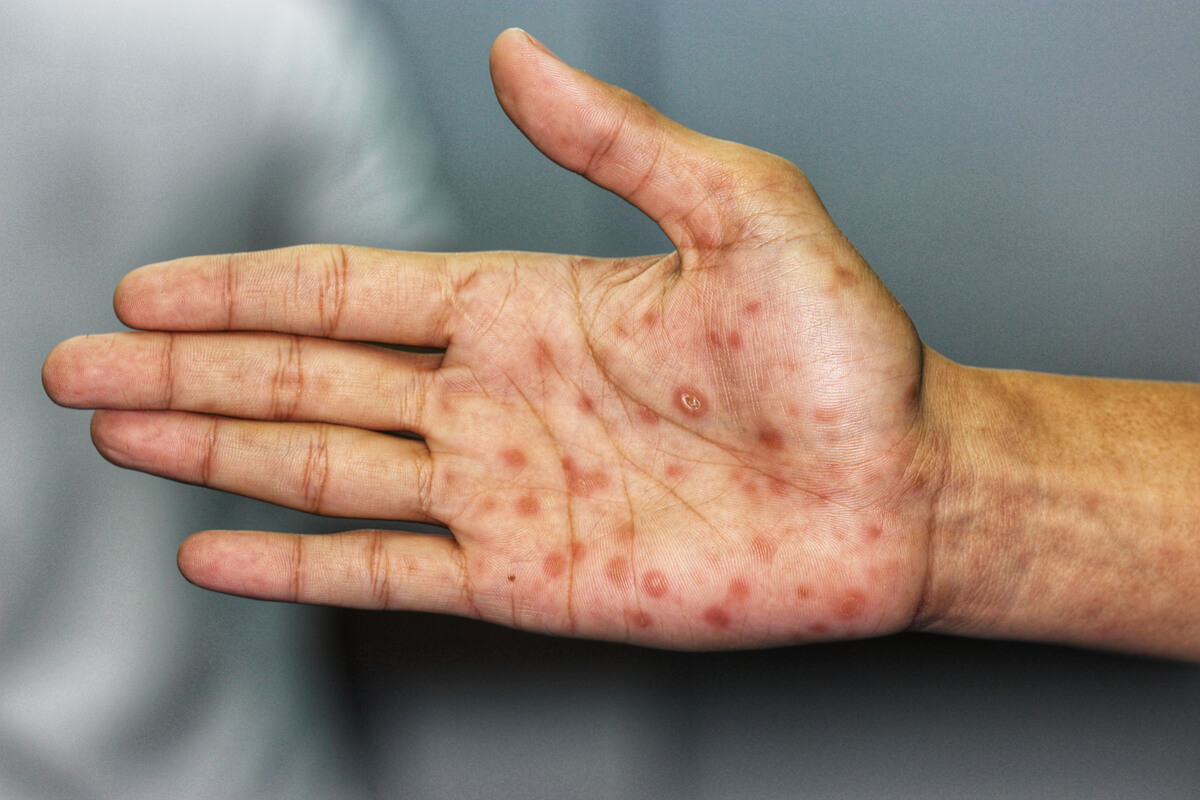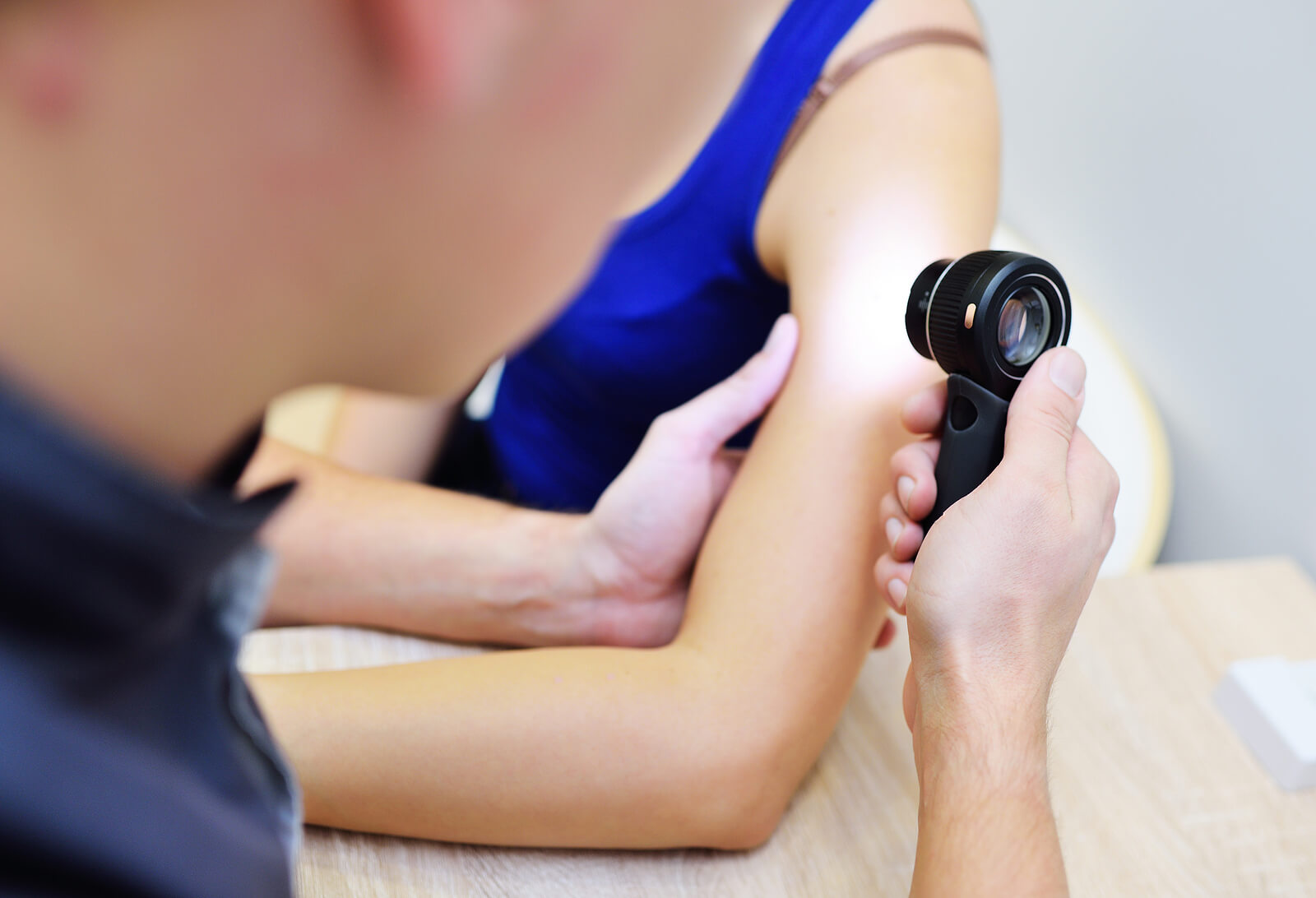Spots on the Skin: Types, Causes and Treatment

We often tend to think that for skin to be considered aesthetically attractive (or “perfect”), it has to be completely uniform. However, no one is exempt from having different types of defects or spots on the skin.
Like teeth, hair, and nails, the skin is one of the parts of the body that we tend to take care of the most because it is part of our “letter of introduction” into society.
However, we often forget that this care isn’t about trying to reach a specific standard of perfection, but rather about understanding what the needs of the skin type are. Only in this way is it possible to keep you healthy and looking good, at any age.
Learning how to take care of the skin within its type also implies understanding that not all spots are indicative of disease (in fact, they usually aren’t).
Types of spots on the skin
The spots on the skin are irregularities in the color of the skin. Thus, they can be lighter or darker and can be classified as follows.
Hyperpigmented

Hyperpigmented skin spots are darker than skin tone. They can be of two types: melanic or melanocytic.
Hyperpigmentation can be the result of factors such as tanning or sunburn, genetics, heat, injury, hormonal changes (such as those that occur in pregnancy), fungal infections, some skin rashes, disorders such as vitiligo and exposure to metals heavy.
Melanic spots are the product of an increase in melanin production. Some examples are freckles, melasma, and inflammatory hyperpigmentation.
Melanocytic spots are the product of an increase in the number of melanocytes. Some examples are lentigos (simple, solar and senile) and moles.
Hypopigmented
Hypopigmented spots are lighter than skin tone. They can be a consequence of the aging of the melanocytes or the selective loss of melanocytes.
Discoloration can be the result of factors such as the proliferation of pathogenic microorganisms on the skin (such as bacteria), vascular changes, rashes, and skin inflammation.
Red spots
The red (or reddish) spots can be caused by rosacea, eczema or couperose.
Factors that influence the appearance of spots on the skin
Although we tend to think that spots on the skin are the product of sun exposure and aging, these aren’t the only factors behind their appearance. In addition to those mentioned above, the following must be taken into account:
- Climate and temperature (cold, heat)
- Skin rashes, scrapes, cuts, wounds, and insect bites
- Some medicines that make you more sensitive to the sun (chloasma)
- Skin disorders like acne, pityriasis alba, pityriasis versicolor, acanthosis nigircans, skin infections, melanoma, dermal melanocytosis, moles, etc.
- Cancer treatment: radiation therapy.
Treatment

Not all skin blemishes need treatment either because they’re benign or simply asymptomatic, or both. However, depending on the aesthetic impact they have on the person, the spots could be treated with the help of a dermatologist.
If the spots are benign, don’t produce symptoms, or aren’t of concern, then it will only be necessary to maintain the use of sun protection daily and the rest of the corresponding skin care. As a preventive measure, observation (in the self-evaluation) and the annual dermatological consultation stand out.
- Proper hydration can prevent blemishes or existing blemishes from becoming more noticeable.
Depending on the case, the stain can be treated with topical medications and self-care, or even combined with laser treatments, chemical peels, and others. These usually work well in unifying the skin tone.
To achieve the best possible results, adherence to the treatment prescribed by the specialist will be essential. Many times, the lack of perseverance or the measures that are taken on their own to try to improve the appearance of the skin create difficulties and prolong the treatment.
When to see the doctor?
If you notice that a spot shows color changes (for no apparent reason), spreads, or is raised, as well as having other abnormal characteristics, it’s best to go to the doctor for a check-up. The same also applies to changes in moles and other birthmarks.
We often tend to think that for skin to be considered aesthetically attractive (or “perfect”), it has to be completely uniform. However, no one is exempt from having different types of defects or spots on the skin.
Like teeth, hair, and nails, the skin is one of the parts of the body that we tend to take care of the most because it is part of our “letter of introduction” into society.
However, we often forget that this care isn’t about trying to reach a specific standard of perfection, but rather about understanding what the needs of the skin type are. Only in this way is it possible to keep you healthy and looking good, at any age.
Learning how to take care of the skin within its type also implies understanding that not all spots are indicative of disease (in fact, they usually aren’t).
Types of spots on the skin
The spots on the skin are irregularities in the color of the skin. Thus, they can be lighter or darker and can be classified as follows.
Hyperpigmented

Hyperpigmented skin spots are darker than skin tone. They can be of two types: melanic or melanocytic.
Hyperpigmentation can be the result of factors such as tanning or sunburn, genetics, heat, injury, hormonal changes (such as those that occur in pregnancy), fungal infections, some skin rashes, disorders such as vitiligo and exposure to metals heavy.
Melanic spots are the product of an increase in melanin production. Some examples are freckles, melasma, and inflammatory hyperpigmentation.
Melanocytic spots are the product of an increase in the number of melanocytes. Some examples are lentigos (simple, solar and senile) and moles.
Hypopigmented
Hypopigmented spots are lighter than skin tone. They can be a consequence of the aging of the melanocytes or the selective loss of melanocytes.
Discoloration can be the result of factors such as the proliferation of pathogenic microorganisms on the skin (such as bacteria), vascular changes, rashes, and skin inflammation.
Red spots
The red (or reddish) spots can be caused by rosacea, eczema or couperose.
Factors that influence the appearance of spots on the skin
Although we tend to think that spots on the skin are the product of sun exposure and aging, these aren’t the only factors behind their appearance. In addition to those mentioned above, the following must be taken into account:
- Climate and temperature (cold, heat)
- Skin rashes, scrapes, cuts, wounds, and insect bites
- Some medicines that make you more sensitive to the sun (chloasma)
- Skin disorders like acne, pityriasis alba, pityriasis versicolor, acanthosis nigircans, skin infections, melanoma, dermal melanocytosis, moles, etc.
- Cancer treatment: radiation therapy.
Treatment

Not all skin blemishes need treatment either because they’re benign or simply asymptomatic, or both. However, depending on the aesthetic impact they have on the person, the spots could be treated with the help of a dermatologist.
If the spots are benign, don’t produce symptoms, or aren’t of concern, then it will only be necessary to maintain the use of sun protection daily and the rest of the corresponding skin care. As a preventive measure, observation (in the self-evaluation) and the annual dermatological consultation stand out.
- Proper hydration can prevent blemishes or existing blemishes from becoming more noticeable.
Depending on the case, the stain can be treated with topical medications and self-care, or even combined with laser treatments, chemical peels, and others. These usually work well in unifying the skin tone.
To achieve the best possible results, adherence to the treatment prescribed by the specialist will be essential. Many times, the lack of perseverance or the measures that are taken on their own to try to improve the appearance of the skin create difficulties and prolong the treatment.
When to see the doctor?
If you notice that a spot shows color changes (for no apparent reason), spreads, or is raised, as well as having other abnormal characteristics, it’s best to go to the doctor for a check-up. The same also applies to changes in moles and other birthmarks.
- Benavides NG, Robles Méndez JC, Candiani JO. Artículo de revisión: hiperpigmentaciones adquiridas. Dermatología C [Internet]. 2017 [cited 2021 Jul 10];16(1):50–62. Available from: https://www.medigraphic.com/pdfs/cosmetica/dcm-2018/dcm181i.pdf
- Conoce los tipos de manchas en la piel : Antiaging Group Barcelona [Internet]. [cited 2021 Jul 10]. Available from: https://www.antiaginggroupbarcelona.com/blog/tipos-manchas-en-la-piel/
- Das S. Hiperpigmentación – Trastornos dermatológicos – Manual MSD versión para profesionales [Internet]. [cited 2021 Jul 10]. Available from: https://www.msdmanuals.com/es/professional/trastornos-dermatológicos/trastornos-de-la-pigmentación/hiperpigmentación
- Manchas en la piel: MedlinePlus enciclopedia médica [Internet]. [cited 2021 Jul 10]. Available from: https://medlineplus.gov/spanish/ency/article/003224.htm
- Rey JP. Alteraciones de la pigmentación cutánea. AEPED [Internet]. [cited 2021 Jul 10]; Available from: https://www.aeped.es/sites/default/files/documentos/pigmentacion.pdf
Este texto se ofrece únicamente con propósitos informativos y no reemplaza la consulta con un profesional. Ante dudas, consulta a tu especialista.







